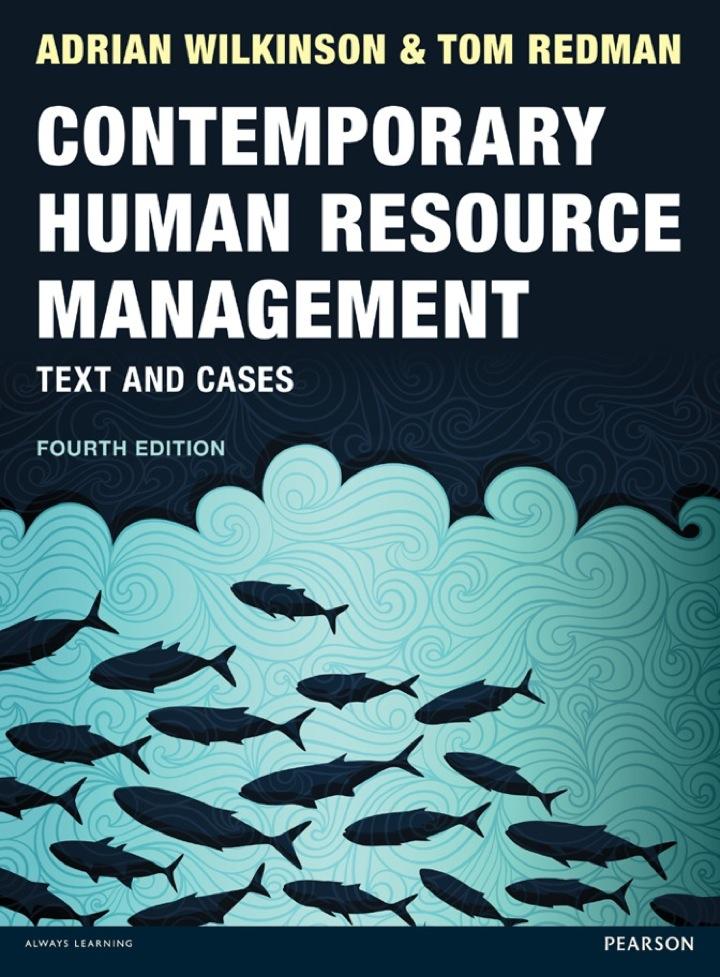Marks and Spencer is a major UK-based retailer employing over 78,000 people with over 700 stores in
Question:
Marks and Spencer is a major UK-based retailer employing over 78,000 people with over 700 stores in the UK. Our detailed focus within Marks and Spencer is on the establishment of a logistical network, known as One Team, which provides a best practice example of the operation of HR practices at the level of the network.
In this case the various stakeholders in the network acknowledged the need to establish network level skills, relationships and processes to improve performance.
In order to do this they critically developed HR practices at the level of the network.
The network is composed of Marks and Spencer and its third party logistical and fulfillment solutions partners
(referred to as the 3PLs) who supply warehousing and merchandising facilities. In 2010 Marks and Spencer, led by Jason Keegan, Head of Logistics – Strategic Network, teamed up with its 3PLs, including DHL, NDL, Wincanton, Tesam Distribution, IDS, CML and The Elite Group, to form One Team.
The shared aims of the One Team network are to work together to improve the performance of Marks and Spencer and the network by sharing knowledge and best practice between the parties. In particular they seek to build a highly competitive retail network, achieve high levels of customer satisfaction, generate significant cost savings and establish a common culture.
Although the network was instigated by Marks and Spencer, the 3PLs have participated extensively in the operation of One Team. The network has implemented a number of common practices and a shared approach to human capital management. In order to do this they have structured their decision-making and created HR practices at the level of the network.
There are two key managerial structures which are integral to the operation of One Team. First, a Steering Group was established jointly by senior Marks and Spencer staff and each of the 3PL s. This group takes overall responsibility for the direction and strategy of One Team and establishes a common purpose among the members. Meetings take place face to face monthly usually at 3PL sites around the country. Second, five work-streams were established to take responsibility for particular aspects of One Team activities including Values and Behaviors, Marketing and Communications, Collaboration, Customer Focus and Developing Talent. These involve managers below the Steering Group from Marks and Spencer and the 3PL s acting semi-autonomously, but reporting to the Steering Group regularly with plans for action to contribute to One Team. Both of these managerial structures are vital to supporting the development of shared knowledge and skills. Moreover, they also provide the infrastructure for the continuation of this cross-boundary organization and they also offer important development opportunities for staff at all levels.
Senior Marks and Spencer managers saw the enhancement of talent management throughout One Team as one of their clear objectives and the principal responsibility of the Developing Talent work-stream. The work-stream facilitates this by advertising all relevant job vacancies across all members of One Team via the shared website, discussed below. This encourages staff to move between 3PL s and Marks and Spencer in ways they would not have done previously. Indeed, this provides Marks and Spencer with the opportunity to identify future talent and to retain this within the network. Employees have the opportunity for career development in ways that they would not otherwise have been aware.
Key internal resourcing decisions were also made over which staff would be allocated to the workstreams.
Critically, these staff were identified according to their role suitability and were drawn from a variety of levels and might just as easily include a team leader as a senior manager from a 3PL site. Once they became members of these work-streams the staff had clear opportunities to develop their personal skills and knowledge in a number of respects. First, each workstream had a high degree of autonomy over how they achieved their objectives. Consequently, the members found they had the freedom to develop new ideas and to innovate. Second, since the members of the workstream were drawn from multiple levels in One Team, junior staff could find themselves working alongside quite senior staff from Marks and Spencer and other 3PL s in a way they would not do normally. Apart from the knowledge and skills development opportunities, these staff had career benefits because they had a chance to ‘get themselves noticed’. It is important to note that the developmental opportunities now extended beyond the boundaries of each organization and existed at the level of the network.........
Question
1. What were the key forms of human, social and organizational capital generated in One Team?
2. What roles did HR practices play in supporting these forms of capital?
3. In the future:
a. How might the network be developed further?
b. What obstacles might be encountered to further development?
c. How might these obstacles be overcome?
Step by Step Answer:

Contemporary Human Resource Management Text And Cases
ISBN: 9780273757825
4th Edition
Authors: Tom Redman, Adrian Wilkinson





